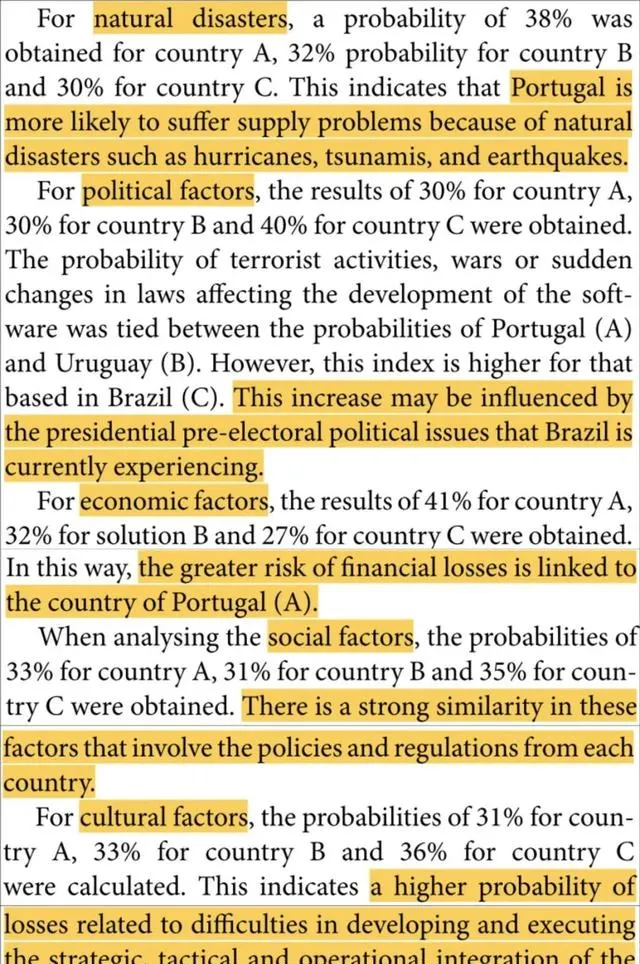
分享興趣,傳播快樂,
增長見聞,留下美好。
親愛的您,這裏是LearingYard學苑!
今天小編為大家帶來「精讀期刊論文【基於貝葉斯方法的軟體供應鏈風險評估】的7.2失效機率評估(1)」。
歡迎您的存取!
Share interest, spread happiness,
increase knowledge, and leave beautiful.
Dear, this is the LearingYard Academy!
Today, the editor brings the "7.2 probability failu (1) of the journal paper 'Risk assessment in software supply chains using the Bayesian method'".
Welcome to visit!

一、內容摘要(Content summary)
本期推文將從思維導圖、精讀內容、知識補充三個方面介紹精讀期刊論文【基於貝葉斯方法的軟體供應鏈風險評估】的失效機率評估(1)。
In this issue, the tweet will introduce the probability failu (1) of the journal paper "Risk assessment in software supply chains using the Bayesian method" from three aspects: mind map, detailed reading content, and additional knowledge supplementation.
二、思維導圖(Mind Mapping)

三、精讀內容(Detailed Reading Content)
本次推文將為大家帶來該期刊論文的失效機率評估的前半部份內容。
This tweet will bring you the first half of the journal paper on Probability of Failure Assessment.
在該部份,作者首先介紹了失效機率評估所用到的工具,並且在選擇工具後,考慮了外部風險因素(自然災害,政治因素,經濟因素,社會因素和文化因素)和內部因素(參與者,軟體元件,操作和維護,供應鏈)。對於每一種情況,都編制了一份調查問卷,其中的計畫按風險因素和國家列出,以分析軟體供應鏈。
In that part, the authors start by describing the tools used for the probability of failure assessment and, after selecting the tools, external risk factors (natural disasters, political, economic, social and cultural factors) and internal factors (participants, software components, operation and maintenance, supply chain) were considered. For each case, a questionnaire with items listed by risk factor and country was developed to analyze the software supply chain.

其次,作者對調查問卷的具體內容進行闡述。對問題的回答采用線性量表,其中1為分配給問題的最低指數,5為與問題最相關。並且,每個問題都有相應的權重,透過將特定問題的受訪者指數之和除以答案總數來計算因素機率失敗。對於每個風險因素,依次提出三個相關問題。問卷調查的結果如下表9所示。
Next, the authors elaborate on the specifics of the questionnaire. The responses to the questions were on a linear scale, where 1 is the lowest index assigned to the question and 5 is the most relevant to the question. Moreover, each question is weighted accordingly, and the factor probability failure is calculated by dividing the sum of the respondents' indices for a given question by the total number of answers. For each risk factor, three relevant questions were asked in turn. The results of the questionnaire are shown in Table 9 below.

就表9中的結果而言,作者對外部因素(自然災害、政治因素、經濟因素、文化因素)進行了相關分析。A國的軟體供應鏈受自然災害、金融損失風險較大,C國受政治、文化因素影響較大,每個國家的政策和法規涉及的這些因素有很大的相似性。
With respect to the results in Table 9, the authors have correlated the external factors (natural disasters, political factors, economic factors, and cultural factors).The software supply chain in country A is more exposed to the risk of natural disasters and financial losses, and country C is more affected by political and cultural factors, and there is a great deal of similarity in the policies and regulations of each country that deal with these factors.

四、知識補充——失效機率評估(Knowledge Addition - Failure Probability Assessment)
失效機率評估是指在工程和系統設計中的一種方法,用於估計特定元件、裝置或系統在給定時間內發生失效的機率。失效機率評估通常用於可靠性工程中,旨在評估系統的可靠性和穩定性。
Probability of failure assessment refers to a methodology used in engineering and system design to estimate the probability of failure of a particular component, equipment, or system within a given time period. Probability of failure assessment is commonly used in reliability engineering to assess the reliability and stability of a system.


今天的分享就到這裏了,
如果您對文章有獨特的想法,
歡迎給我們留言。
讓我們相約明天,
祝您今天過得開心快樂!
That's all for today's sharing.
If you have a unique idea about the article,
please leave us a message,
and let us meet tomorrow.
I wish you a nice day!
參考資料:ChatGPT、百度百科
參考文獻:
André Felipe Henriques Librantz, Ivanir Costa, Mauro de Mesquita Spinola, et al. Risk assessment in software supply chains using the Bayesian method [J]. International Journal of Production Research, 2021, 59(22): 6758-6775.
本文由LearningYard學苑整理並行出,如有侵權請在後台留言!
文案| Ann
排版| Ann
稽核| Whisper











